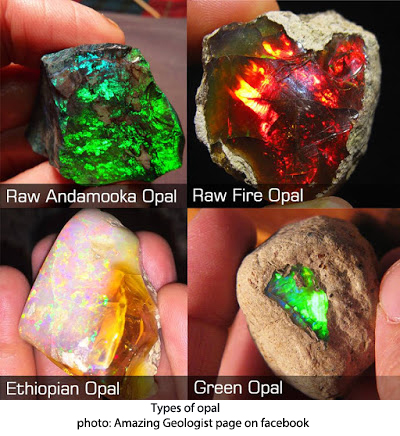Source: http://www.geologyin.com/2016/06/types-of-opal-with-photos.html
Opal is a hydrated amorphous form of silica (SiO2·nH2O), Because of its amorphous character, it is classed as a mineraloid, unlike crystalline forms of silica, which are classed as minerals.
It is deposited at a relatively low temperature and may occur in the fissures of almost any kind of rock, being most commonly found with limonite, sandstone, rhyolite, marl, and basalt.
Precious Opal – is opal which exhibits the phenomenon known as play of colour, which is produced by the diffraction of white light through a micro-structure of orderly arrayed spheres of silica.The internal structure of precious opal makes it diffract light; depending on the conditions in which it formed, it can take on many colors.
The variety of natural opal is determined by the two characteristics of body tone and transparency.
Body Tone – The base tones of light, dark and black opal range from colourless, white, through the various shades of grey, to black.
Transparency – Opal of any body colour will be opaque, translucent or transparent. When it is transparent or very translucent, and the colour clarity is sharp, it is often referred to as crystal opal.
Opal is the national gemstone of Australia.
Types of Natural Opals
There are many different types of natural opals. There is black opal, white opal, crystal opal, and jelly opal. There are other kinds – fire opal, hyalite, water opal, hydrophane, and honey opal.
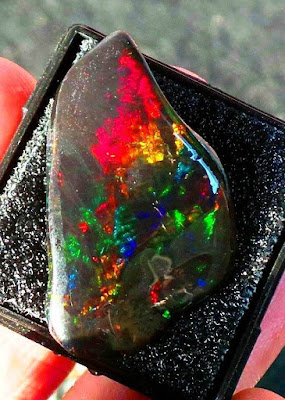
Black Opal is the most valued of Opals and comes mainly from Lightning Ridge. High quality stones are very rare. The term ‘black opal’ does not mean that the stone is completely black (a common mistake), it simply means the stone has a dark body tone in comparison to a white opal. Easily distinguished by the blackness of the background “body tone” or body colour.
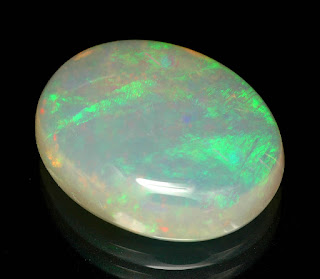
White opals with a base tone ranging from colourless to medium grey are called light opal. Some people refer to these as “white” although this expression should only be used where the body colour is very milky. White opal is more common and because of its body tone, generally does not show the colour as well as black opal. Nevertheless, white opals can still be absolutely magnificent in colour if a good quality stone is found.
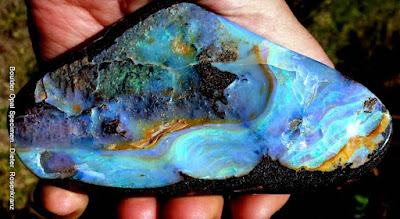
Boulder is a variety of precious opal that has the host rock forming naturally as part of the gem. Often just a thin vein of precious opal is present. It mainly occurs in specific locations over a wide area of Western Queensland. Boulder opal occurs as in-fillings of cracks or voids usually in ironstone boulders. Boulder opal can be black or light depending on the appearance of the stone when viewed from the surface. Boulder Opal has a tendency to cleave; when cleaved the “split” leaves two faces of opal, with a naturally polished face.
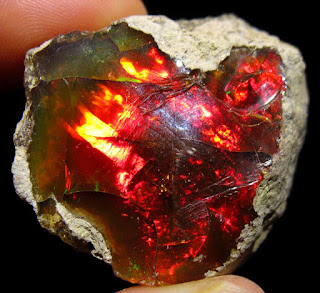
credit: Opalinda.com
Fire opal is a transparent to translucent opal, with warm body colors of yellow to orange to red. Although it does not usually show any play of color, occasionally a stone will exhibit bright green flashes. The Fire opal is a term not commonly used within Australia but most famous source of fire opals is the state of Querétaro in Mexico; these opals are commonly called Mexican fire opals. Fire opals that do not show play of color are sometimes referred to as jelly opals. Mexican opals are sometimes cut in their ryholitic host material if it is hard enough to allow cutting and polishing. This type of Mexican opal is referred to as a Cantera opal. Also, a type of opal from Mexico, referred to as Mexican water opal, is a colorless opal which exhibits either a bluish or golden internal sheen.
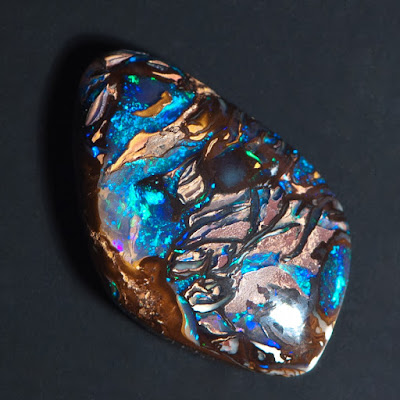
The term matrix opal is commonly used where the opal is intimately diffused as infillings of pores or holes between grains of the host rock in which it was formed. Boulder matrix opal is found in Queensland and can be distinguished by the ironstone host rock. Andamooka matrix opal is a porous material from Andamooka,South Australia, Which may be enhanced by soaking the specimen in a sugar solution and then boiling in acid to deposit carbon in the available pore spaces, resulting in a dark background.
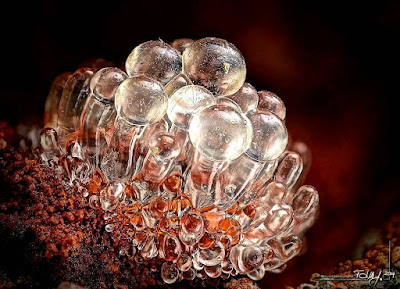
Hyalite or Mullers Glass, is a colourless opal which gives the appearance of glass. Rarely, it does display a faint tint of colour (blue, green or yellow). It is also sometimes referred to as water opal, too, when it is from Mexico. The two most notable locations of this type of opal are Oregon and Mexico.
Girasol opal is a type of hyalite opal that exhibits a bluish glow or sheen that follows the light source around.
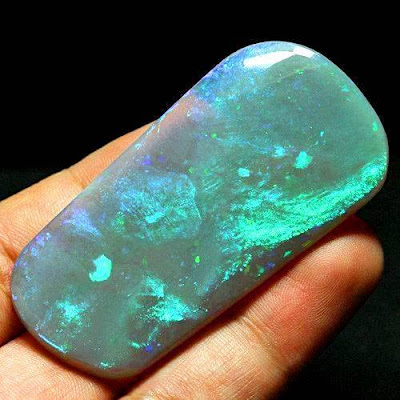
Peruvian opal (also called blue opal) is a semiopaque to opaque blue-green stone found in Peru, which is often cut to include the matrix in the more opaque stones. It does not display pleochroism. Blue opal also comes from Oregon in the Owyhee region, as well as from Nevada around Virgin Valley.
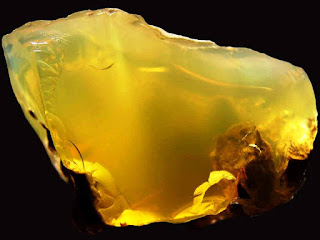
Honey Opal
Honey-yellow, translucent to clear and resinous to glassy in appearance. It may or may not have play-of-colour.
Synthetic opal
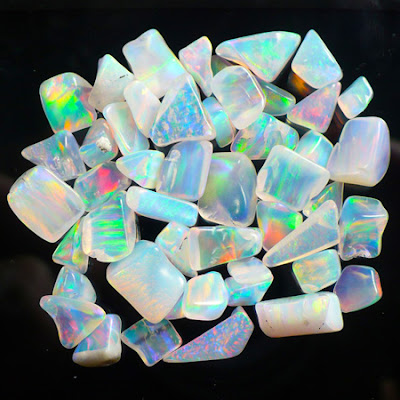
Opals of all varieties have been synthesized experimentally and commercially. The discovery of the ordered sphere structure of precious opal led to its synthesis by Pierre Gilson in 1974. The resulting material is distinguishable from natural opal by its regularity; under magnification, the patches of color are seen to be arranged in a “lizard skin” or “chicken wire” pattern. Furthermore, synthetic opals do not fluoresce under ultraviolet light. Synthetics are also generally lower in density and are often highly porous.

clouds or a fiery explosion with billowing smoke. Photo: Jeff Schultz
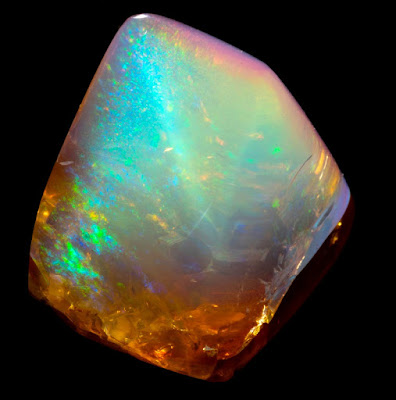
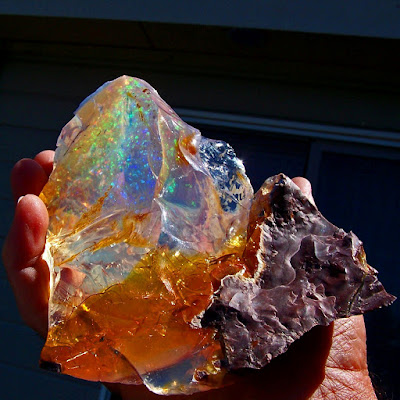
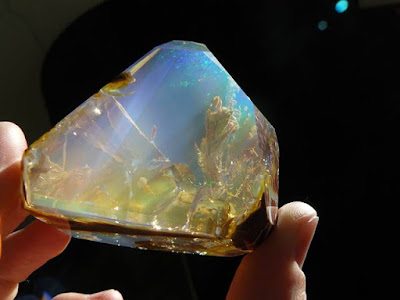
Credit: Mckenna Praetorius


